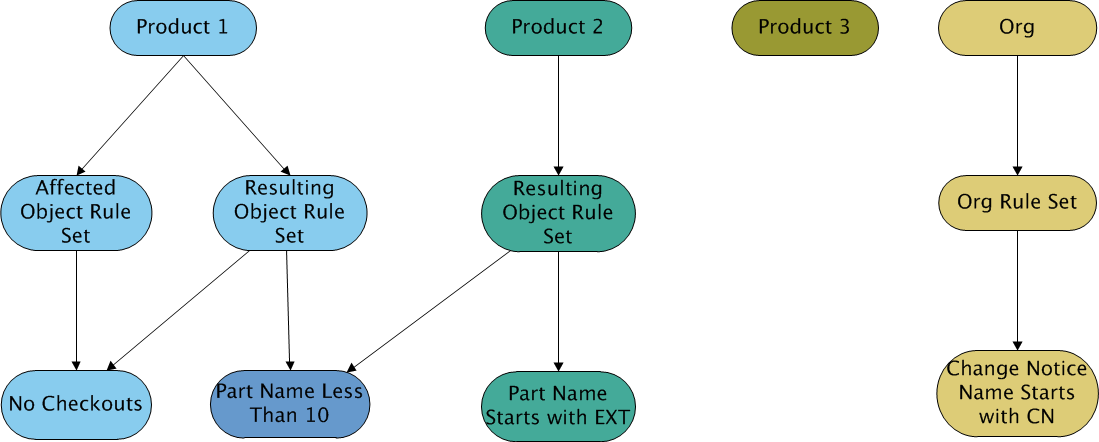Customization Example of Multiple Rules, Rule Sets, and Relationships
Here is another example of how you might configure rules against multiple products and multiple relationships. In this case, there are 4 rules, 4 rule sets and 4 containers.
After all the rules are created, you could configure the workflow to use these rule sets by using some code that looks like this:
com.ptc.core.businessRules.engine.BusinessRuleSetBean[] ruleSetBeans =
new com.ptc.core.businessRules.engine.BusinessRuleSetBean[] {
com.ptc.core.businessRules.engine.BusinessRuleSetBean.
newBusinessRuleSetBean("CNOrgRuleSet",
com.ptc.core.businessRules.engine.BusinessRuleSetBean.PRIMARY_BUSINESS_OBJECT),
com.ptc.core.businessRules.engine.BusinessRuleSetBean.
newBusinessRuleSetBean("AffectedPartProdRuleSet",
wt.change2.AffectedActivityData.class.getName()),
com.ptc.core.businessRules.engine.BusinessRuleSetBean.
newBusinessRuleSetBean("ResultingPartProdRuleSet",
wt.change2.ChangeRecord2.class.getName())
};
com.ptc.core.businessRules.validation.RuleValidationResultSet
resultSet = wt.businessRules.BusinessRulesHelper.engine.execute(primaryBusinessObject,
ruleSetBeans );
Examples
If we had a part in Product 1 that was a Resulting Object, the part would have to have a part name less than 10 characters, and it could not be checked out.
If we had a document in Product 2 that was a resulting object, then there are no rules for it. This is because there are only rules for Parts.

